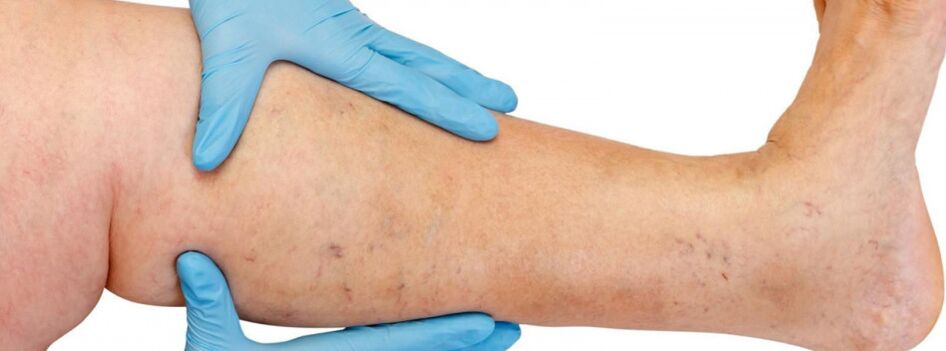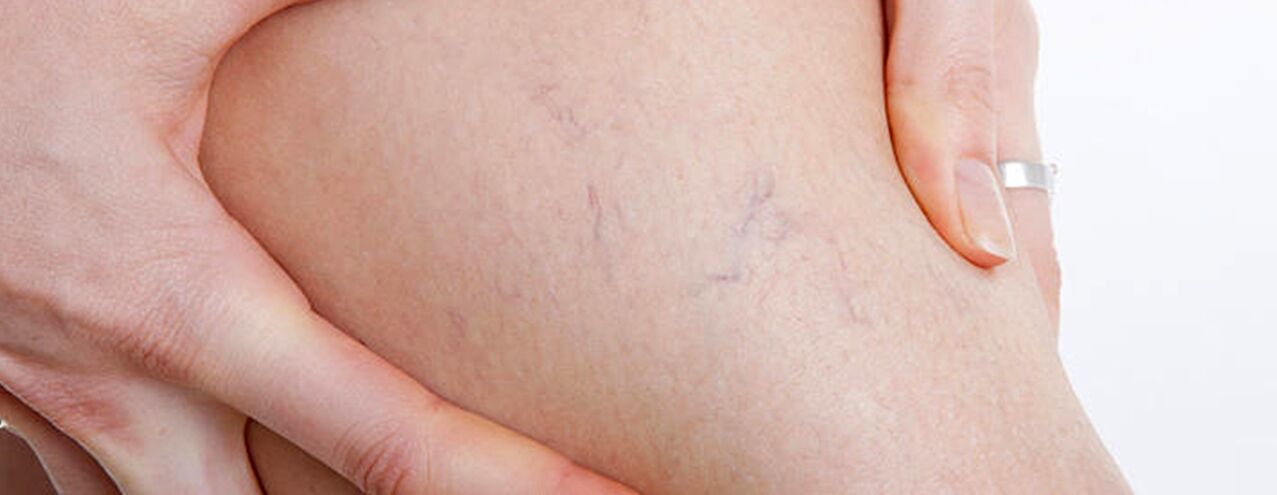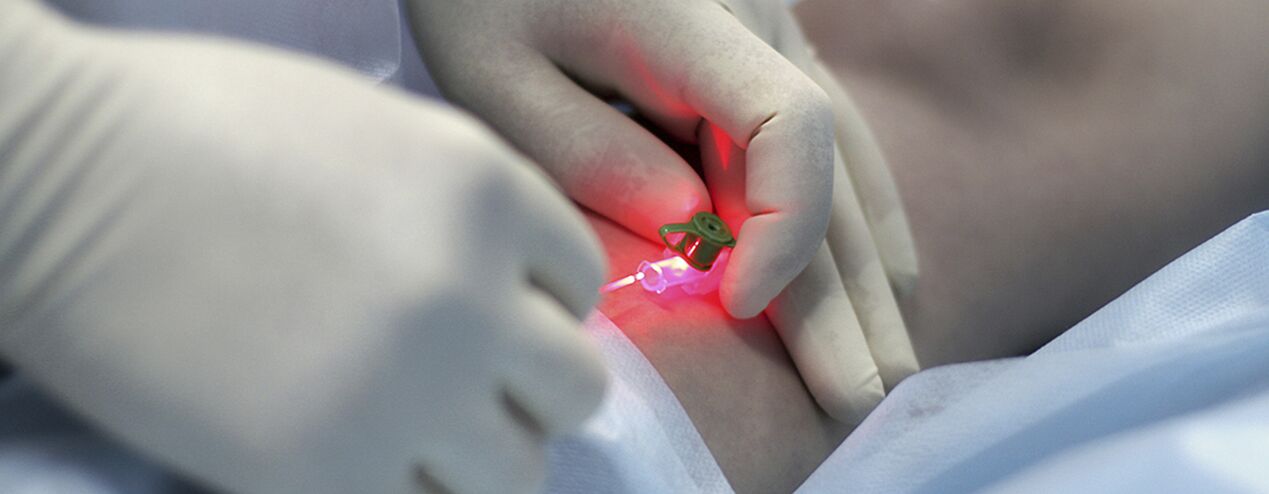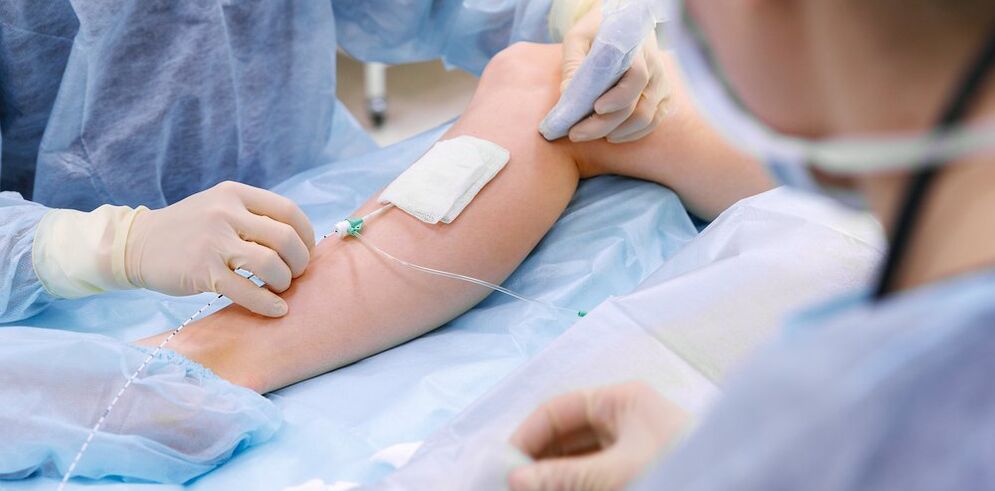
The anatomical structure of the venous system in the lower leg is very variable. Knowledge of the individual characteristics of the structure of the venous system plays an important role in evaluating instrumental examination data in choosing the right treatment method.
The lower veins are divided into superficial and deep. The superficial venous system of the lower leg starts from the venous plexus of the toes, which forms the venous network of the dorsum of the foot and the dorsal arch of the foot skin. The medial and lateral marginal veins originate from it, which enter the great and small saphenous veins, respectively. The great saphenous vein is the longest vein in the body, containing from 5 to 10 pairs of valves, usually 3-5 mm in diameter. It originates in the lower third of the lower leg in front of the medial epicondyle and ascends in the subcutaneous tissue of the lower leg and thigh. In the groin, the great saphenous vein drains into the femoral vein. Sometimes the great saphenous vein of the thigh and lower leg can be represented by two or three trunks. The small saphenous vein begins in the lower third of the lower leg along its lateral surface. In 25% of cases, it drains into the popliteal vein in the area of the popliteal fossa. In other cases, the small saphenous vein may rise above the popliteal fossa and drain into the femoral, great saphenous vein, or into the deep vein of the thigh.
The deep vein of the dorsal foot begins with the dorsal metatarsal vein of the foot, drains to the arch of the dorsal vein of the foot, from where blood flows to the anterior tibial vein. At the level of the upper third of the lower leg, the anterior and posterior tibial veins join to form the popliteal vein, which is located to the side and somewhat behind the artery of the same name. In the area of the popliteal fossa, the small saphenous vein, the vein of the knee joint, drains into the popliteal vein. The internal femoral vein usually drains to the femoral 6-8 cm below the inguinal fold. Above the inguinal ligament, this vessel receives the epigastric vein, an internal vein that surrounds the ilium, and enters the external iliac vein, which joins the internal iliac vein at the sacroiliac joint. The paired common iliac veins begin after the confluence of the external and internal iliac veins. The right and left common iliac veins join to form the inferior vena cava. It is a large vessel without valves, 19-20 cm long and 0. 2-0 in diameter. 4 cm. The inferior vena cava has parietal and visceral branches, through which blood flows from the lower legs, lower body, abdominal organs, and small pelvis.
Perforated veins (communicating) connect deep veins with superficial ones. Most have valves located suprafascially and are caused by blood moving from the superficial veins to the deep veins. There are direct and indirect perforating veins. The direct line connects the network of deep and superficial veins directly, which are not directly connected indirectly, that is, they first flow into the muscular vein, which then flows deep.
Most perforating veins originate from tributaries, and not from the trunk of the great saphenous vein. In 90% of patients, the perforating vein on the medial surface of the lower third of the leg is incompetent. On the lower part of the leg, the most common failure is the perforating vein of Cockett, connecting the posterior branch of the great saphenous vein (Leonardo's vein) with the deep vein. In the middle and lower third of the thigh, there are usually 2-4 of the most permanent perforating veins (Dodd, Gunther), directly connecting the trunk of the great saphenous vein with the femoral vein. With varicose transformation of the small saphenous vein, inefficient communication veins in the middle and lower third of the lower leg and in the area of the lateral malleolus are most often observed.
The clinical course of the disease

Basically, the expansion of varicose veins occurs in the large saphenous vein system, less often in the small saphenous system, and begins with the tributary of the venous trunk in the lower part of the leg. The natural course of the disease in the early stages is quite good, the first 10 years or more, in addition to cosmetic defects, the patient may not be bothered by anything. In the future, if timely treatment is not carried out, complaints of heaviness, fatigue in the legs and their swelling after physical exercise (long walks, standing) or in the afternoon, especially in summer, begin to join. Most patients complain of pain in the legs, but detailed questions reveal that this is precisely a feeling of fullness, heaviness, and fullness in the legs. With a short rest and a high position of the limbs, the severity of the sensation decreases. These symptoms characterize venous insufficiency at this stage of the disease. If we talk about pain, it is necessary to exclude other causes (lack of arteries in the lower leg, acute venous thrombosis, joint pain, etc. ). The subsequent development of the disease, in addition to the increase in the number and size of dilated veins, leads to the occurrence of trophic disorders, more often due to the increase in the inefficiency of the vena cava and the occurrence of insufficiency of deep venous valves.
With a lack of perforating veins, trophic disorders are limited to any surface of the lower leg (lateral, medial, posterior). Trophic disorders in the early stages are shown by local hyperpigmentation of the skin, then thickening (induration) of subcutaneous fat is added to the development of cellulite. This process ends with the formation of an ulcerative-necrotic defect, which can reach a diameter of 10 cm or more, and extends deep into the fascia. The usual site of venous trophic ulcers is the area of the medial malleolus, but the localization of ulcers on the lower legs can be different and multiple. At the stage of trophic disorders, severe itching, burning in the affected area combine; some patients develop microbial eczema. Pain in the ulcer area may not be expressed, although in some cases it is intense. At this stage of the disease, heaviness and swelling in the legs become permanent.
Diagnosis of varicose veins
It is very difficult to diagnose the preclinical stage of varicose veins, because such patients may not have varicose veins in the legs.
In such patients, the diagnosis of varicose veins of the legs is mistakenly rejected, despite the presence of symptoms of varicose veins, signs that the patient has relatives suffering from this disease (hereditary tendency), ultrasound data on early pathological changes in the venous system.
All this can lead to missing the deadline for the start of optimal treatment, the formation of irreversible changes in the vein wall and the development of very serious and dangerous complications of varicose veins. Only when the disease is recognized at an early preclinical stage, it becomes possible to prevent pathological changes in the leg venous system through a minimal therapeutic effect on varicose veins.
Avoiding various types of diagnostic errors and making a correct diagnosis is possible only after a thorough examination of the patient by an experienced specialist, a correct interpretation of all his complaints, a detailed analysis of the history of the disease and the maximum possible information obtained on the most modern equipment about the condition of the leg venous system (instrumental diagnostic methods).
Duplex scanning is sometimes performed to determine the exact localization of the vena cava, explaining veno-venous reflux in color code. If the valve is insufficient, the leaflet is no longer fully closed during the Valsava test or the compression test. Valve deficiency leads to the appearance of venous-venous reflux, high, through an inefficient saphenofemoral fistula, and low, through an inefficient perforated vein of the leg. Using this method, it is possible to register the backflow of blood through the prolapsing leaflet of the inefficient valve. That is why our diagnostics have a multilevel or multilevel character. Under normal circumstances, the diagnosis is made after diagnostic ultrasound and examination by a phlebologist. However, in very difficult cases, the examination must be carried out in stages.
- first, a thorough examination and questioning by a phlebologist surgeon is performed;
- if necessary, the patient is referred for additional instrumental research methods (duplex angioscanning, phleboscintigraphy, lymphoscintigraphy);
- patients with concomitant diseases (osteochondrosis, varicose eczema, lymphovenous insufficiency) are invited to consult with a leading expert consultant on this disease) or additional research methods;
- all patients requiring surgery are first consulted by a surgical surgeon and, if necessary, by an anesthesiologist.
Treatment
Conservative treatment is indicated mainly for patients who have contraindications to surgical treatment: according to the general condition, with a slight dilatation of the vein, causing only cosmetic discomfort, in case of rejection of surgical intervention. Conservative treatment aims to prevent the further development of the disease. In this case, the patient should be advised to wrap the affected surface with an elastic bandage or wear elastic stockings, periodically give the foot a horizontal position, do special exercises for the legs and lower legs (flexion and extension in the ankle and knee joints). to activate the musculo-venous pump. Elastic compression accelerates and increases blood flow in the veins in the thigh, reduces the amount of blood in the saphenous vein, prevents the formation of edema, improves microcirculation, and contributes to the normalization of metabolic processes in the tissue. Bandaging should start in the morning, before getting out of bed. The bandage is applied with slight tension from the toes to the thigh with mandatory capture of the heel and ankle joints. Each subsequent round of wrapping should overlap the previous one by half. It should be recommended to use certified therapeutic knitwear with individual selection of the compression level (from 1 to 4). Patients should wear comfortable shoes with hard soles and low heels, avoid long standing, heavy physical labor, work in hot and humid areas. If, due to the nature of production activities, the patient has to sit for a long time, then the legs should be given a high position, replacing the special stand of the required height under the legs. It is advisable every 1-1. 5 hours to walk a little or rise on the toes 10-15 times. The resulting calf muscle contraction increases blood circulation, increasing venous outflow. While sleeping, the legs must be betrayed in a high position.
Patients are advised to limit water and salt intake, normalize body weight, regularly take diuretics, drugs that increase vein tone / According to the indications, drugs are prescribed that improve microcirculation in tissues. For treatment, we recommend the use of non-steroidal anti-inflammatory drugs.
An important role in the prevention of varicose veins belongs to physical therapy. In an uncomplicated form, water procedures are useful, especially swimming, warm foot baths (not higher than 35 °) with a 5-10% solution of edible salt.
Compression sclerotherapy

Indications for injection therapy (sclerotherapy) for varicose veins are still debated. This method consists of introducing a sclerosing agent into the dilated vein, further compression, desolation and sclerosis. Modern drugs used for this purpose are quite safe, i. e. does not cause necrosis of the skin or subcutaneous tissue when administered extravasally. Some experts use sclerotherapy for almost all forms of varicose veins, while others reject the method entirely. Most likely, the truth lies in between, and it makes sense for young women with early stages of the disease to use injection treatment methods. The only thing is that they must be warned about the possibility of recurrence (higher than with surgery), the need to always wear a fixation compression bandage for a long time (up to 3-6 weeks), the possibility that several sessions.
The group of patients with varicose veins should include patients with telangiectasias ("spider veins") and reticular dilatation of the small saphenous vein, because the causes of these diseases are the same. In this case, together with sclerotherapy, it is possible to carry outpercutaneous laser coagulation, but only after the exclusion of deep vein and perforated wounds.
Percutaneous laser coagulation (PCL)
This is a method based on the principle of selective photocoagulation (photothermolysis), based on the absorption of different laser energy by various body substances. A feature of this method is the absence of this technological touch. Attachment focuses energy in the blood vessels of the skin. Hemoglobin in vessels selectively absorbs laser beams with specific wavelengths. Under the action of the laser in the lumen of the vessel, the destruction of the endothelium occurs, which leads to the adhesion of the vessel wall.
The efficiency of the PLC directly depends on the depth of penetration of the laser beam: the deeper the vessel, the longer the wavelength should be, therefore the PLC has a rather limited indication. For vessels with a diameter exceeding 1. 0-1. 5 mm, microsclerotherapy is the most effective. Given the widespread and branching spider veins on the legs, the variable diameter of the vessels, combined treatment methods are being actively used: at the first stage, sclerotherapy of veins with a diameter of more than 0. 5 mm is performed, then a laser is used to remove the remaining"asterisks" that are smaller in diameter.
The procedure is almost painless and safe (skin cooling and anesthetic are not used) because of the lightapparatusrefers to the visible part of the spectrum, and the wavelength of light is calculated so that the water in the tissue does not boil, and the patient does not burn. Patients with high pain sensitivity are recommended to use a cream with a local anesthetic effect. Erythema and edema subside after 1-2 days. After the course, for about two weeks, some patients may experience darkening or lightening of the treated skin area, which then disappears. In people with light skin, the changes are almost invisible, but in patients with dark or tanned skin, the risk of temporary pigmentation is quite high.
The number of procedures depends on the complexity of the case - the blood vessels are at different depths, the lesions can be insignificant or occupy a relatively large surface of the skin - but usually no more than four laser therapy sessions (5-10 minutes). each) is required. The maximum result in a short time is achieved due to the unique "square" shape of the light pulse of the device, which increases its efficiency compared to other devices, while also reducing the possibility of side effects after the procedure?
Surgery
Surgical intervention is the only radical treatment for patients with varicose veins on the lower leg. The purpose of the operation is to eliminate the pathogenetic mechanism (veno-venous reflux). This is accomplished by removing the main trunks of the great and small saphenous veins and ligating the incompetent communicating veins.
Surgical treatment of varicose veins has a history of one hundred years. Previously, and many surgeons still use large incisions along the course of the varicose veins, general or spinal anesthesia. Traces after such a "miniphlebectomy" remain a reminder throughout the life of the operation. The first operation on the vein (according to Schade, according to Madelung) is so traumatic that the harm from it exceeds the harm from varicose veins.
In 1908, an American surgeon came up with a method of removing the saphenous vein using a hard metal probe by plucking the olive and the vein. In its improved form, this surgical method to remove varicose veins is still used in many public hospitals. Varicose veins are removed with a separate incision, as suggested by surgeon Narat. Therefore, the classic phlebectomy is called the Babcock-Narata method. Phlebcock-Narath phlebectomy has disadvantages - large scars after surgery and impaired skin sensitivity. The ability to work is reduced by 2-4 weeks, which makes it difficult for patients to agree to surgical treatment of varicose veins.
Phlebologists of our network of clinics have developed a unique technology for the treatment of varicose veins in one day. Cases that are difficult to handle usingcombination technique. Large main varicose veins are removed by inversion stripping, which involves minimal intervention through mini-incisions (from 2 to 7 mm) of the skin, which practically do not leave scars. The use of minimally invasive techniques involves minimal tissue trauma. The result of our operation is the elimination of varicose veins with excellent aesthetic results. We perform combined surgical treatment under intravenous or total spinal anesthesia, and the maximum stay in the hospital is up to 1 day.

Surgical treatment includes:
- Crossectomy - crossing the confluence of the trunk of the great saphenous vein into the deep venous system
- Stripping - removal of varicose vein fragments. Only the modified varicose veins are removed, and not the entire vein (as in the classic version).
Actuallyminiphlebectomycame to replace the method of removing the tributaries of the main varicose veins according to Narata. Previously, along the course of the varix, a skin incision was made from 1-2 to 5-6 cm, where the vein was identified and removed. The desire to improve the cosmetic results of interventions and to be able to remove veins not through traditional incisions, but through mini-incisions (punctures), forced doctors to develop tools that allow them to do almost the same through minimal skin defects. This is how phlebectomy sets of "hooks" of various sizes and configurations and special spatulas appeared. And instead of the usual scalpel to pierce the skin, they began to use a scalpel with a very narrow blade or a needle with a sufficiently large diameter (for example, the needle used to take venous blood for analysis with a diameter of 18G). Ideally, the effect of a puncture with such a needle after a while can be said to be invisible.
For some forms of varicose veins, we treat on an outpatient basis under local anesthesia. Minimal trauma during miniphlebectomy, as well as a small risk of intervention, allows this operation to be performed in a day hospital. After minimal observation in the clinic after the operation, the patient can be allowed to go home on his own. In the postoperative period, an active lifestyle is maintained, active walking is encouraged. Temporary disability is usually no more than 7 days, then it is possible to start work.
When is microphlebectomy used?
- With the trunk diameter of the large or small saphenous vein varicose more than 10 mm
- After experiencing thrombophlebitis on the main subcutaneous stem
- After trunk revision after other types of treatment (EVLK, sclerotherapy)
- Removal of very large individual varicose veins.
It can be an independent operation or be a component of the combined treatment of varicose veins, combined with laser vein treatment and sclerotherapy. Application tactics are determined individually, always taking into account the results of duplex ultrasound scanning of the patient's venous system. Microphlebectomy is used to remove veins of various localization that have been altered for various reasons, including on the face. Professor Varadi from Frankfurt developed his useful tool and formulated the basic postulates of modern microphlebectomy. The Varadi phlebectomy method provides excellent cosmetic results without pain and hospitalization. This is very meticulous work, almost jewelry.
After vein surgery
The postoperative period after the usual "classic" phlebectomy is quite painful. Sometimes a large hematoma interferes, there is edema. Wound healing depends on the phlebologist's surgical technique, sometimes there is lymph leakage and significant scar formation that lasts, often after a large phlebectomy there is a violation of sensitivity in the heel area.
On the other hand, after miniphlebectomy, the wound does not need stitches, because this is only a puncture, there is no pain, and damage to the skin nerves is not observed in our practice. However, such results of phlebectomy can only be achieved by highly experienced phlebologists.
Make an appointment with a phlebologist
Be sure to consult with a qualified specialist in the field of vascular disease.

















